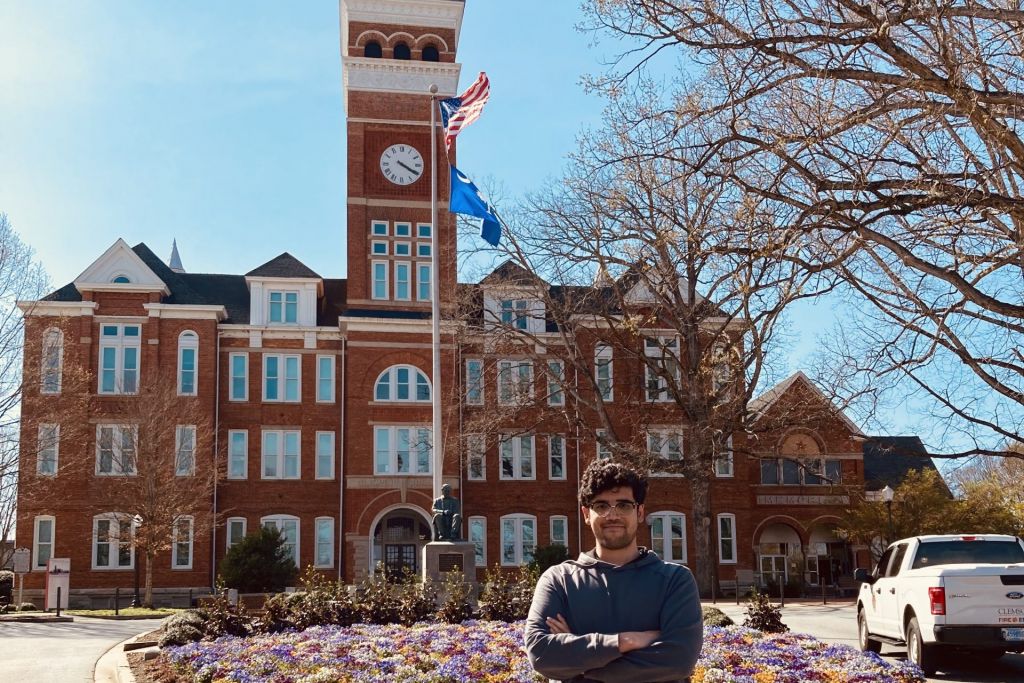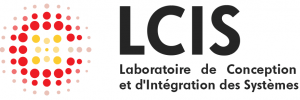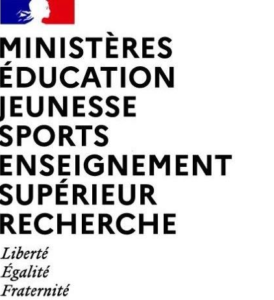Actualités
Amir : son séjour à la Clemson University, Caroline du Sud
Parti en échange de novembre 2021 à fin mars 2022, Amir Ali Pour prend le temps de revenir sur les raisons de son séjour, son parcours administratif, ainsi que sa vie sur place.

I traveled to the US in November 2021 under a short-term visiting scholar program. I came to continue my PhD research work collaboratively with Dr. Fatemeh Afghah in Clemson University in South Carolina. My thesis director Dr. David Hely, who is now a hardware security expert in CEA leti in France, has worked on-site and remotely with Dr. Afghah’s research team since the time she was in Northern Arizona University (NAU). Dr. Hely’s collaboration in NAU brought the idea of working collaboratively together also as part of my PhD research work. We did so since late 2019 up until now.
Why did you decide to go to the US? Coming to the US to do research with another team was an idea we had in mind in LCIS to stretch the publicity of our novel works. Research works in general demand more visibility and publicity of which the research should manually scavenge for any novel work they put out to be seen and considered among a bigger community. Despite publishing several papers, we only had few chances to go out there among the researchers of a relatively bigger community to discuss our achievements. This was mostly due to all the conferences we submitted to being held in a virtual venue, something which still continues due to the COVID-19 restrictions.
Passing my second year of PhD and heading towards the beginning of the third, we felt more the need that we must get out there and break open a local contribution if not to go and see other researchers’ work in person. Fortunately, we were still strongly working together at the time with Dr. Afghah’s team, and we could re-open the discussion to make a short-term visiting program happen and I came to the US as part of my third year of PhD and to work closely with Dr. Afghah in her research lab. Luckily, the Covid restrictions were eased at the time, and we sought during the end of my second PhD year to define a 5-month on-site collaboration during the third year. I then did the paper works before the summer of 2021. Passing all the registrations and paper works before summer and attending a visa interview, I was able to receive my visa in September 2021, and flew to the US in November 2021 to stay here up until the end of March 2022.
How about the administrative issues, which were they? This is a good question, and my answer can represent sort of a specific case. But no worries, as part of it would still represent the experience that a general community who would apply for a similar program would have to go through.
For the administrative works, I had first to start with contacting and communicating with the school I wanted to go to. At the time, Dr. Afghah, the supervisor I work with, was in Northern Arizona University (NAU) located in the north of Arizona state, a city called Flagstaff. Normally, I had to register through the school’s website and fill-in an application as a visiting scholar. For this, I needed several documents such as my hosting supervisor’s invitation letter, my CV, my research plan, etc. These are mostly the documents everyone would provide and there will always be a clear guidance the hosting school will give to the applicants with a checklist of required documents. After filling-in my application, I received a form called DS-2019, which is a USCIS official form that is required for the applicant to apply for a visa. For the class of visiting program that I attended, a J-1 visa was required. Noting that J-1 has two types, shortly known as a short-term J-1, and a long-term J-1. I attended to get a short-term J-1 for the program I applied.
After getting the DS-2019 form NAU, I had to pay a fee to create a SEVIS record for my visiting program, and fill-up a state official form called DS-160 to then schedule a visa interview in the US embassy. After doing so, I scheduled my interview in the US embassy in Paris. Normally, to obtain a visa you need to undergo a visa interview. I did mine which took around 10 minutes, explaining my program and my studies and research work, what I would do while I was in the US, etc. After the interview, in some cases people get their visa right-away, and some must undergo an administrative processing. For me, it was the later and I received my visa a little more than 3 months after my interview.
During this time however, Dr. Afghah had moved from NAU to a new school, Clemson University(CU). This meant that I had to transfer my SEVIS records from NAU to CU. Transferring however is a practice known to most of the universities in the US, so much so that they have defined a standardized transfer procedure that all schools follow, and any applicant who wishes to transfer can undergo the process. The process is very clear, and mostly the students or scholars who would take it receive in-detail guidance and support from the administrative representatives from both schools. Mine was no exception, and both the NAU and CU have helped my case to be transferred. Also normally, I also had to undergo the same process of registering and filling-in my application in Clemson University. Noting that all the administrative process I mentioned here are available online on school’s website, both for NAU and CU. And for any question or help that I needed with any parts of it, I emailed the head of the international services of the school and got immediate help.
How is your daily life there? My daily life in the US has been great so far. Here the part that I live and commute from, the domestic area, is more like a town. The city that Clemson University is in is called Clemson, home to the American football team Clemson Tigers, and a very large football stadium, which is in the campus area of CU. Clemson itself is actually a college town close to some other towns like Central, Seneca, Anderson, and Greenville. I live in Central for instance, and commute between home and school. I walk partly to a near bus station and there I get a bus that takes me directly to the campus area of CU. Also, the bus transportation here in Clemson and Central area is free, both for the general public and the students. The main campus of CU is big and most of the time crowded. You see students commuting here and there. The school also has its history, and constructions belonging to the historical parts of the school are well persevered, which adds to the general beauty of the campus that catches the eyes of all, either first time visitors or those commuting daily. The people of Clemson, those who are from the area or those who moved in just recently, no difference, are great, welcoming, and supportive. It’s a trifecta that one would say, I came to the US, visited a beautiful town, and found many friends. That trifecta I had experienced also conventionally!
CU also is a very active and supportive school for its students and affiliates. Many events are being broadcasted daily and weekly through email. The social and academic community here also is on a constant watch to see if anyone needs help or support. This is a reminder of the same culture that UGA has also back in France. And for the US itself, well, you would hear no less as one would say, that I say also, it is a great country to visit. I visited good parts of the premises of the school in Clemson. And I also had a chance to travel to Atlanta, in Georgia state. Short travels they were but joyful no less. Given though, that inter-city and inter-state public transportation is not what you would expect to be like the one in France for instance. France surely has a great railroad system with variety of trains and travel solutions. Here in the US, you get to travel mostly by plane, as this is a very large country, and travelling by train or bus is not considered a convenient option. I still traveled to Atlanta by train (Amtrak), and it was a good trip. But further than that may be a bit challenging if done by train.
Due to the short time that I had here, I had to focus mostly on my research work, leaving just a bit of time left to visit the whereabouts. But there are many things to visit and experience here in the US, so much so as there are in France and Europe. Coming to experience living in these beautiful countries is a great chance one gets and I am very much appreciative for it. Though it requires one to undergo some extra process to prepare for the travels. Nonetheless, if the opportunity exists, I encourage anyone to get it, which is certainly fruitful one. My stay here in the States has been so far fruitful expectedly, both for my personal experience and the professional work we carried out here with Dr. Afghah and remotely with my supervisors in France. We successfully closed some of the on-going works we had and started new research projects to work on in the coming year. I gratefully thank my school UGA which has been supportive in preparing the administrative prerequisites needed to make this program happen for me and my PhD studies. A great thank you to Dr. Afghah for hosting my stay in CU and keenly giving the potential research works that I could participate in during my stay here and on. And surely a great thank you to my PhD thesis director Dr. Hely who has always been the encourager behind the importance of our research work and supportive all the way.


